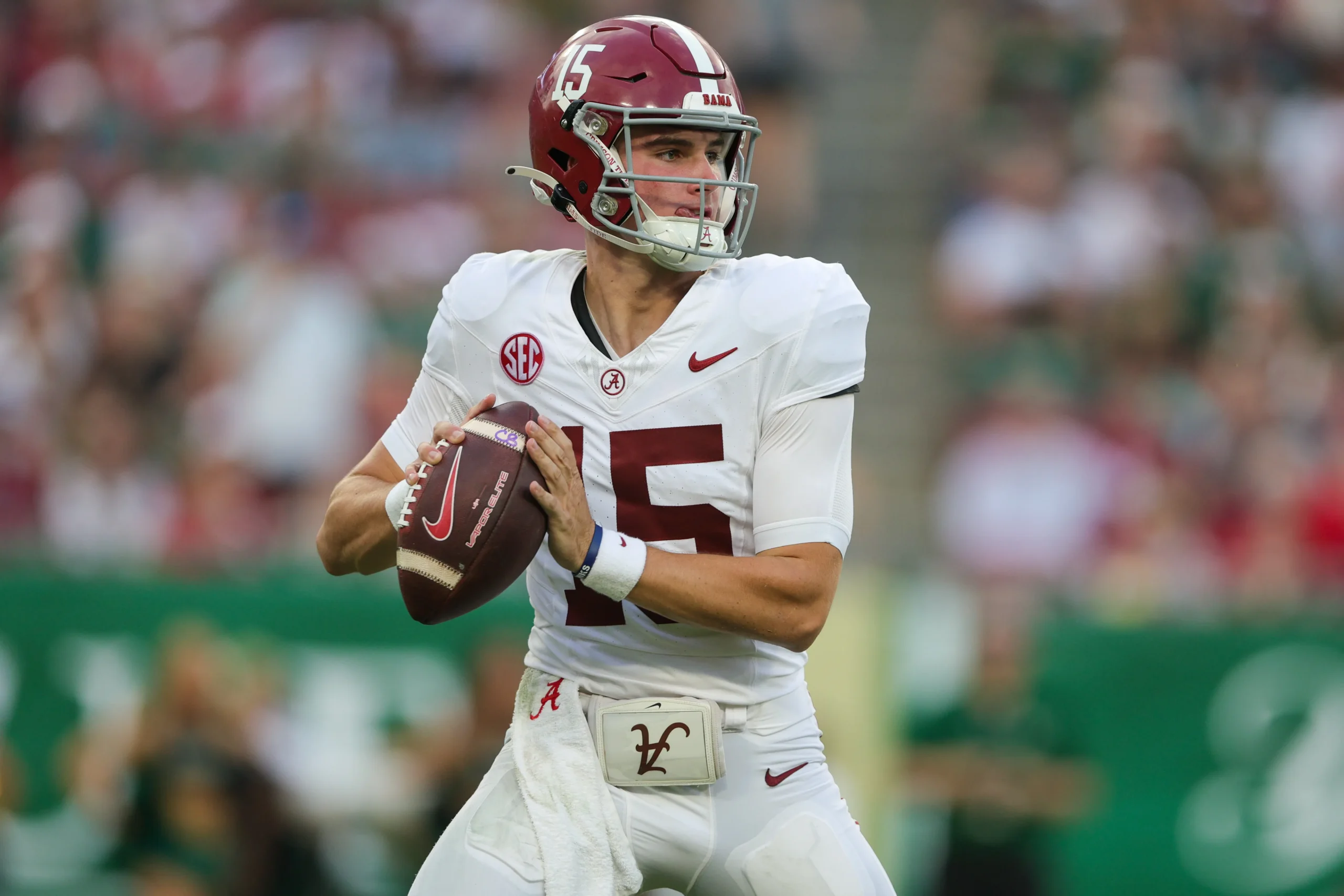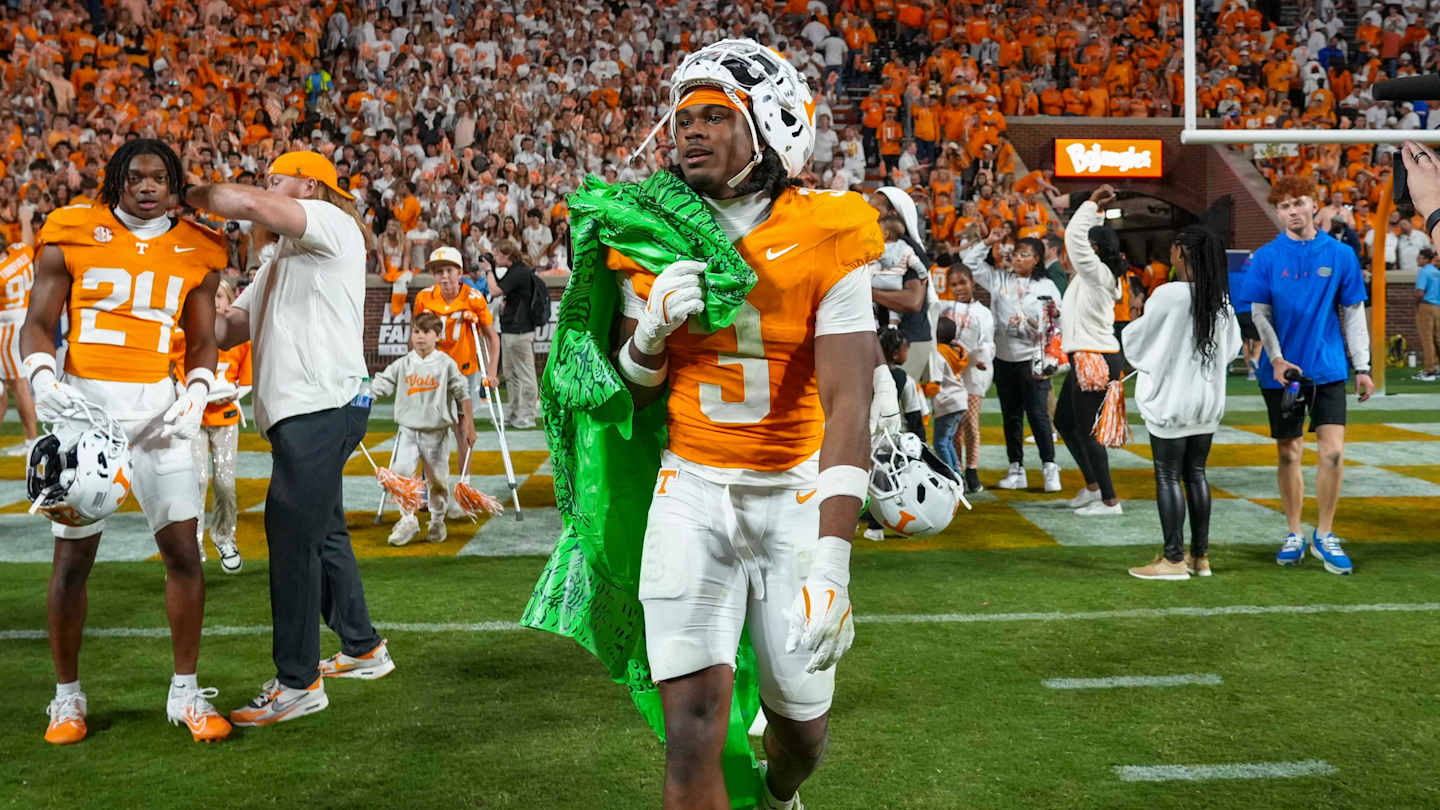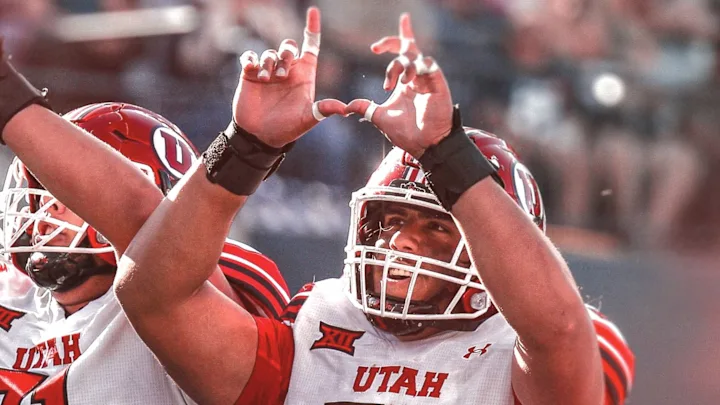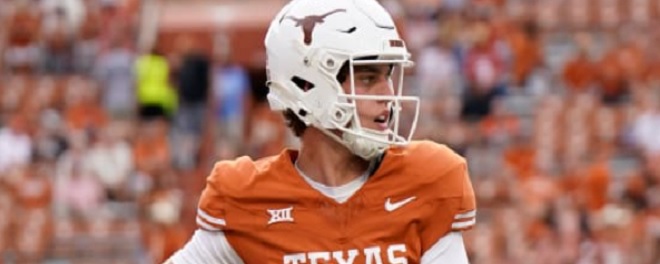By Charlie Campbell.
Send Charlie an e-mail here: [email protected]
Follow Charlie on Twitter @draftcampbell for updates.
This page was last updated Feb. 21, 2014. Follow me @walterfootball for updates.
Position Review: Safeties
Safety Class
Early-round talent: B+
Mid-round: B
Late-round: B
Overall grade: B+
2014 prospects vs 2013
HaHa Clinton-Dix > Kenny Vaccaro
Calvin Pryor > Eric Reid
Dion Bailey < Matt Elam
Jimmie Ward < Jonathan Cyprien
Craig Loston < D.J. Swearinger
Deone Bucannon < T.J. McDonald
Ed Reynolds > J.J. Wilcox
Ahmad Dixon < Shawn Williams
Safety was one of the strongest positions in the 2013 NFL Draft class. There was talent for the first round and some superb depth on the second day that spilled into Day 3. The 2014 class is a respectable year for safeties. There could be five who are selected in the first two rounds this season. This year, two should go in the top 32.
If you were to merge the two classes, I think Clinton-Dix is the best safety. Vaccaro and Pryor are about equal. Reid, Elam and Cyprien would go behind Pryor but ahead of Bailey. Swearinger would go between Bailey and Ward. McDonald would go after Loston. Wilcox would go after Reynolds and Dixon would be behind Williams.
There are a number of other safeties who could get second-day consideration as well. That group entails Florida State’s Terrance Brooks, Wisconsin’s Dezmen Southward, North Carolina’s Tre Boston and others. All of them could be worthy mid-round picks.
Safest Pick: HaHa Clinton-Dix, Alabama

This was a tough call because I believe that Clinton-Dix, Pryor, Bailey and Ward will all be good pros if they can stay healthy. However, Clinton-Dix looks like a perfect fit for the passing-driven NFL. He is a rangy free safety who covers a lot of ground in the deep part of the field. Clinton-Dix can match up on wide receivers and tight ends. He has displayed some ball skills to go along with his size, speed, intelligence and instincts. Clinton-Dix was prepared well by Nick Saban, and it would be shock if he didn’t turn into a reliable cover safety.
Biggest Bust Potential: Ed Reynolds, Stanford

Reynolds had a strong 2012 season and was one of the top safeties in college football. He followed that up with a disappointing 2013 season. Reynolds had a number of games in which he made mistakes in coverage and allowed completions downfield. In run support, Reynolds also had some missed tackles. His splash plays fell dramatically as well. He should have returned to school, but entered the 2014 NFL Draft. If Reynolds plays like he did in the 2013 season, he could end up never developing into a starter and being a bust.
Safety Rankings by Attributes
Man Coverage:
NFL prototype: Earl Thomas, Seahawks
- HaHa Clinton-Dix
- Jimmie Ward
- Dion Bailey
- Calvin Pryor
- Ed Reynolds
- Craig Loston
- Deone Bucannon
- Ahmad Dixon
Recap: The NFL is a passing-driven league, and safeties with the ability to play some man coverage are a hot commodity. Many safeties are too stiff to match up against a slot receiver, a tight end or a receiving running back. Offenses seek out those mismatches, so good safeties have some man-coverage ability.
Clinton-Dix was an easy choice as the top man-cover safety in this draft class. He regularly had successful man coverage for Alabama. Clinton-Dix picked up slot receivers in man and did a masterful job of covering receivers running deep down the field. His fluid coverage is ideal for the NFL.
Ward’s coverage ability at the Senior Bowl was extremely impressive. There were plays that made one ponder whether he could play some cornerback. Ward is fast and agile. He was good at covering slot receivers and other wide outs deep down the field at Northern Illinois.
Bailey and Pryor both flashed the ability to cover receivers in college. That isn’t what either does best, but both players are quick and athletic enough to get the job done. They should work to improve their coverage skills, but each has the capacity to play some man at the next level.
Loston didn’t show a lot of man-coverage ability in college, but he flashed at the Senior Bowl. Loston doesn’t quite look as fluid as the higher-ranked safeties, and LSU had him in a lot of zone. He has some potential to develop.
Bucannon and Dixon don’t have much man-coverage ability that should translate to the NFL. They are both straight-line defenders. However, Bucannon showed improved coverage skills as a senior, but he doesn’t look like he has the athleticism to be put in man coverage on receiving tight ends or slot receivers.
Zone Coverage:
NFL prototype: Jarius Byrd, Bills
- HaHa Clinton-Dix
- Jimmie Ward
- Dion Bailey
- Calvin Pryor
- Ed Reynolds
- Craig Loston
- Ahmad Dixon
- Deone Bucannon
Recap: The ability to play well in zone coverage is a must in the NFL. There are teams that weigh this heavier than others due to scheme. Zone safeties need to be intelligent and cover a lot of ground while playing disciplined and instinctive football. They have to be able to pick up receivers who work through the short and intermediate part of the field.
Clinton-Dix is also the top zone safety in the 2013 NFL Draft. He covers a ton of ground because of his quickness and his instincts. Ward is very good in zone coverage. His reaction skills are superb, and he was all over the field for Northern Illinois during the past three seasons.
Bailey was very good in zone coverage in 2013 and showed that he is well prepared having played a few seasons for one of the zone-coverage gurus in Monte Kiffin. Zone schemes will like the fit with the Bailey. Pryor is fast and physical with the instincts to make big plays. He should be an asset as a zone safety in the NFL.
Reynolds looked like a good zone safety in 2012, but not so much in 2013. If he can get straightened out, he might be a nice value.
Loston does better in zone than man, but he could have issues picking up the NFL’s speed receivers in the deep part of the field. Dixon and Bucannon can execute in zone and are better there than they are in man.
Deep Help:
NFL prototype: Eric Berry, Chiefs
- HaHa Clinton-Dix
- Jimmie Ward
- Calvin Pryor
- Dion Bailey
- Ed Reynolds
- Craig Loston
- Ahmad Dixon
- Deone Bucannon
Recap: This is a must to be a good safety in the NFL. Safeties are the last line of defense, so excelling in the deep part of the field can keep points off the board. Those who are beaten downfield, frequently find their way to the bench in a hurry. Defending the deep part of the field also includes stopping running backs who break free. Thus, safeties need to be good tacklers in the open field. Luckily for teams seeking this type of defender, there are some good options in the 2014 NFL Draft.
The past two seasons, Clinton-Dix made a plethora of clutch tackles down field. He made so many touchdown-saving tackles that led to Alabama’s defense keeping points off the board. Not only did he make big tackles, but he was so good at picking up deep receivers that he took away deep ball attempts and forced a lot of incompletions. Clinton-Dix’s deep help should be an immediate asset.
Ward was excellent about defending the deep part of the field at the Senior Bowl. He is quick to break over to the sideline to reach speed receivers. Ward also has the tackling technique to take down ball-carriers in the open field.
There is a slight drop off to Pryor from the top two. Pryor is more of an in-the-box safety, but he did flash some play-making in the deep part of the field in 2013. Plus, he intimidates receivers with his propensity to punish receivers down field.
Bailey was quick and instinctive in the deep part of the field for USC. The reason that he is lower is because he played linebacker early on in his career and enters the NFL with less experience. Loston and Reynolds both were solid deep defenders in their career, although Reynolds had some problems in 2013.
Bucannon has straight-line speed to cover ground, but he isn’t that agile or fluid in the deep part of the field, which holds him back. Dixon is an in-the-box safety rather than a deep-field defender.
Run Defense:
NFL prototype: T.J. Ward, Browns
- Calvin Pryor
- Craig Loston
- Dion Bailey
- Deone Bucannon
- Jimmie Ward
- Ahmad Dixon
- HaHa Clinton-Dix
- Ed Reynolds
Recap: The NFL doesn’t have as large of a need for the big, physical safeties of the ’80s and ’90s, who were mini linebackers. Still, coaches want safeties who are good tacklers and run-defenders who are capable of playing in the box. There are a lot of good run-defenders in this draft class. In fact, all eight of these safeties have shown the ability to be quality run-defenders.
Pryor is a physical safety who has no issues playing in the tackle box. He totaled over 200 tackles over the past three seasons and can lay some wood. Pryor does a nice job of moving through traffic to make tackles.
Loston, Bailey and Bucannon are all really good at defending the run. They are physical and good tacklers. Bailey played linebacker for a time, so it isn’t surprising that he looks especially comfortable in the tackle box.
Ward produced nice tackle totals in his career and does a good job serving as a run-defender. The reason he’s rated behind the others is that being 5-foot-10, 191 pounds makes him undersized for the NFL. That could be a problem as the eighth man in the box.
Dixon’s run defense was strong in 2013. He made some crushing hits on the perimeter. It might surprise you to see Clinton-Dix lower in this category. He isn’t a terrible run-defender, but Alabama didn’t expose him much as the eighth man in the box. Clinton-Dix lined up deep as Vinnie Sunseri, Robert Lester and Landon Collins served as the Crimson Tide’s strong safeties over the past two seasons. Reynolds had some rough moments in run defense in 2013 with missed tackles and bad angles.
Ball Skills:
NFL prototype: Ed Reed, Free Agent (Ravens)
- Dion Bailey
- Jimmie Ward
- HaHa Clinton-Dix
- Deone Bucannon
- Ed Reynolds
- Craig Loston
- Calvin Pryor
- Ahmad Dixon
Recap: The NFL is always on the look out for safeties with a knack for picking off passes. Safeties with the ball skills to catch errant throws or slap passes away from receivers are a great asset. Elite safeties have a knack for creating turnovers.
In my opinion, Bailey has the best ball skills of any safety in this class. He can be a straight-up ballhawk in the middle of the field. Bailey is always around the ball, which leads to good things for his defense. He is very adept at reading the quarterback’s eyes and breaking on the ball. Over the past three years, Bailey amassed 11 interceptions with five coming in 2013.
Ward isn’t far behind; he had seven interceptions as a senior and totaled 11 over the past two seasons. Ward also did a nice job of racking up passes broken up in his collegiate career. His ball skills are one of his selling points.
Clinton-Dix had five interceptions as a platoon player in 2012. He didn’t get many opportunities in 2013, but he has good ball skills for the NFL.
Bucannon doesn’t look like a ballhawk, but he has a knack for causing turnovers. Bucannon snatched six interceptions in 2013 and came close to a number of others. He collected 10 picks across the past two years, so he has a nose for the football.
Reynolds had six interceptions in 2012, but only one last year. Loston didn’t show a lot of ball skills, but he had three picks in each of the past two seasons.
Pryor totaled five picks across the past two years, but he has more ball skills than that total indicates. Dixon wasn’t a ballhawk for Baylor.
Hitting Ability:
NFL prototype: Donte Whitner, 49ers
- Calvin Pryor
- Deone Bucannon
- Craig Loston
- Ahmad Dixon
- Dion Bailey
- HaHa Clinton-Dix
- Jimmie Ward
- Ed Reynolds
Recap: Even though the NFL is trying to reduce the knockout shots that have put some safeties in the Hall of Fame, a safety who is a hard hitter and can separate the ball is loved by coaches. There are a few safeties who really swat in this class.
Pryor is an absolute missile on the field and is looking to blow up offensive players. He delivers massive shots in every game. Pryor is a ferocious hitter, and I was surprised he didn’t land more targeting suspensions last year.
Bucannon, Loston and Dixon all are very physical players. All three of them are hard hitters who can blast offensive players when given the opportunity. Bucannon has a well-earned reputation for laying the wood, which is why he ranks second.
Bailey and Clinton-Dix can all flash some hard hits. Ward will throw his body around, but he doesn’t pack the same punch as the others.
Tight End Defense:
NFL prototype: Earl Thomas, Seahawks
- HaHa Clinton-Dix
- Dion Bailey
- Calvin Pryor
- Jimmie Ward
- Ed Reynolds
- Craig Loston
- Ahmad Dixon
- Deone Bucannon
Recap: Coaches are looking for safeties who can match up against the dangerous receiving tight ends who have become a rage in the NFL. Starting with the likes of Tony Gonzalez and Antonio Gates, there is currently a pursuit of receiving tight ends. Ron Gronkowski, Jimmy Graham and Vernon Davis have been so effective that defensive coordinators have to come up with game plans to defend them. Safeties who can cover tight ends are one of the best ways to defend those play-makers.
Clinton-Dix has a real ability to defend tight ends. He has some quickness, size and agility. Clinton-Dix not only can run with tight ends downfield, but he also has the strength to battle them. Clinton-Dix could be a big asset to guard the receiving tight ends in the NFL with his skills in man coverage.
Bailey demonstrated real coverage ability on tight ends during the past few seasons. He has enough size, speed and agility to defend tight ends in the middle of the field.
Ward is good in coverage and can blanket tight ends, but he is undersized. NFL tight ends could make receptions over him as they will have a big height advantage. Pryor has the physical tools to cover tight ends with size and speed, but he will need more development in his man-coverage skills.
Reynolds and Loston have occasionlly flashed some ability in defending tight ends. Loston was making strides in this category as a senior. Reynolds also got good practice preparation going against the good tight ends who have come out of Stanford in recent years.
Bucannon and Dixon look like they would be mismatched going against tight ends in man coverage.
Tackling:
NFL prototype: Troy Polamalu, Steelers
- Deone Bucannon
- Craig Loston
- Dion Bailey
- Jimmie Ward
- Calvin Pryor
- HaHa Clinton-Dix
- Ahmad Dixon
- Ed Reynolds
Recap: Every year, it seems that tackling is getting worse in the NFL. It isn’t hard to see why; players don’t get to practice tackling very often. Even in the rare padded practice, players very rarely take a ball-carrier to the ground. The NFLPA has restricted contact, plus teams want to avoid injuries. Tackling is becoming a lost art.
Bucannon, Loston and Bailey are good form tacklers who have the strength to deliver the hit. Each one is reliable. Ward is an excellent tackler and could be rated first if he were larger. Still Ward has good technique to take the legs out from under ball-carriers.
Pryor is a good tackler as well, but in the NFL, he’s going to have to be careful of hits that will draw suspensions. Pryor can’t help his team win if he’s forced to watch the game on TV. Pryor needs to temper his desire to always deliver a knockout blow and work on wrapping up.
Clinton-Dix is a reliable tackler, but he hasn’t played in the box much. Dixon is a good tackler, but he can get overly aggressive at times – like Pryor. Reynolds is inconsistent.
NFL Picks - Dec. 20
NFL Power Rankings - Dec. 17
2026 NFL Mock Draft - Dec. 17
Fantasy Football Rankings - Sept. 1




